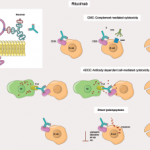You are seeing a hospital consult late in the afternoon on a Saturday. The patient has suspected, new-onset lupus with inflammatory arthritis, renal failure with nephrotic range proteinuria and a malar rash. You plan to start the patient on high-dose IV steroids, and you decide to speak to the nephrologist on call first. When he…








